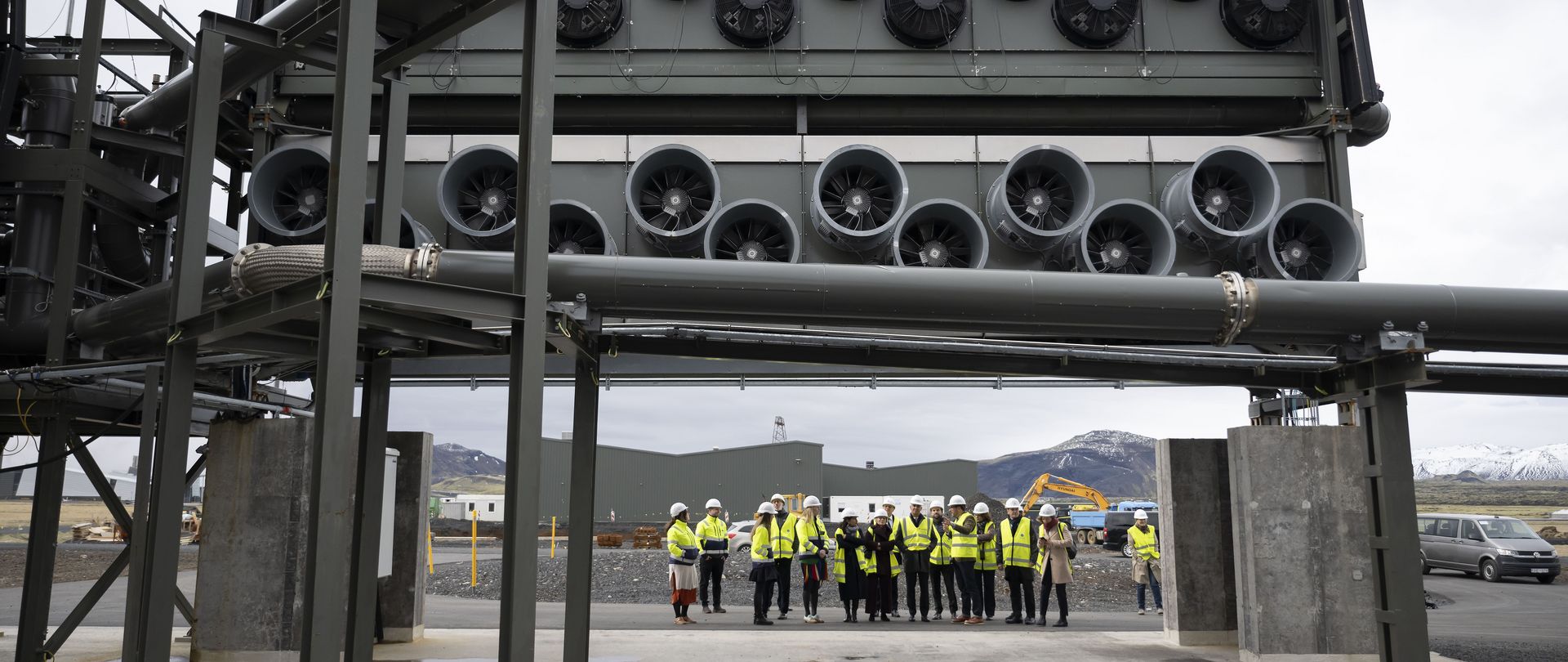
The world's first ‘Direct Air Capture and Storage’ plant near Reykjavik, Iceland.
© picture alliance/KEYSTONE | ANTHONY ANEX
Carbon Management
With the adoption of net-zero greenhouse gas emissions targets in European and German climate policy, so-called "hard-to-abate emissions" have increasingly become the focus of climate policy discussions. In addition to drastically reducing emissions, the capture of CO2 and its subsequent use or permanent storage will have to play an important role - as has been shown in international and national mitigation modelling. Consequently, “carbon management” has been taken up in a variety of political initiatives at the national, international and supranational level.
The umbrella term carbon management encompasses technologies that capture CO2 and then either use it as a resource (carbon capture and utilisation, CCU) or store it permanently (carbon capture and storage, CCS). The wide range of applications in industry – particularly in sectors where process emissions occur – make carbon management a much-discussed interface between industrial and climate policy. Provided that the captured CO2 originates directly or indirectly (via biomass) from the atmosphere, these processes can achieve net-negative emissions and remove CO2 from the atmosphere (Carbon Dioxide Removal, CDR). In contrast to CCS/CCU applications where fossil CO2 is captured, CDR methods can help to offset residual emissions, bringing net-zero and net-negative targets within reach.
-
Accounting and monitoring challenges for blue carbon enhancement in national climate policy targets and international carbon markets
in: Carbon Management, 16(1), 01.12.2025.doi:10.1080/17583004.2025.2585895
-
Monitoring, Reporting and Verification for Marine Carbon Dioxide Removal
in: Muñiz Piniella, A., Rodriguez Perez, A., Kellett, P., Alexander, B., Bayo Ruiz, F., Heymans, J. J. (Eds.), Future Science Brief N°. 13 of the European Marine Board, 2025.doi:10.5281/zenodo.17435116
-
Carbon dioxide removal in the G20 pledges: limited and lacking credibility
State of Carbon Dioxide Removal Insight Report, Oxford, October 2025doi:10.17605/OSF.IO/X8U9M
-
A prudent planetary limit for geologic carbon storage
in: Nature, 645, pp. 124–132, 03.09.2025.doi:10.1038/s41586-025-09423-y
-
A Scientific Summary for Policy-Makers: the State of the Science for Marine Carbon Dioxide Removal (mCDR)
in: Joint Group of Experts on the Scientific Aspects of Marine Environmental Protection (GESAMP), UNESCO-IOC, IOC Technical Series, 209, 2025. -
Exploring Site-Specific Carbon Dioxide Removal Options With Storage or Sequestration in the Marine Environment – The 10 Mt CO₂ yr⁻¹ Removal Challenge for Germany
in: Earth's Future, 13, 4, April 2025doi:10.1029/2024EF004902